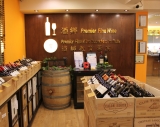With a continuous history of winemaking dating back to 1852, the stone buildings and wineries of the Clare Valley add to the region\'s striking and varied beauty. It is a high quality producer of long-lived, intensely flavoured and strongly structured table wines, virtually all of which are made in limited quantities.
Although much has been written about the climate of this region, in many ways it is difficult to reconcile with its wine styles. Its weather data point to a far warmer climate than is the case; cool afternoon breezes are the key and play a major role in slowing down the ripening process. Furthermore, altitude and position within the Valley as well as aspect all lead to considerable variations in individual site climate. Overall, however, the climate is moderately continental, with cool to cold nights and warm to hot summer days; the rainfall is winter-spring dominant, making irrigation all but essential while relatively low humidity (and summer rainfall) means a low incidence of fungal disease.
Harvest commences in early March and finishes, typically, with Riesling coming in last in late April. With the exception of the open expanses of the Polish Hill River to the east, and Auburn to the south, the region is defined into a series of sub-valleys running in every direction, with numerous creeks or creek beds. The higher altitude or west-facing slopes often produce the best vineyard sites and this very beautiful region is no exception.
The soils vary but are, by and large, excellent; red to brown grey in colour, and with significant limestone sub-soil content, particularly in the more southerly subregions.
Info: Australian Wine & Brandy Corporation www.wineaustralia.com












